The impact of staff motivation incentives on productivity
Posted on: March 19, 2024by Ben Nancholas

What impact does staff motivation have on productivity?
Employee motivation refers to how happy and driven an individual is in their role. Employees who are motivated are much more likely to want to work hard, perform well, and care if the business prospers. Higher levels of motivation bring higher levels of energy, creativity and commitment, as well as greater alignment with wider organisational goals – and an understanding of how daily work contributes to the ‘bigger picture’.
There are a whole host of other advantages to a highly motivated workforce:
- reduced absenteeism and presenteeism
- increased employee retention and lower levels of employee turnover
- greater likelihood of attracting quality candidates and partnerships
- increased employee productivity and job performance
- better relations between businesses and employees
- stronger organisational culture and better work environment
- better standards of customer service and experience.
Additionally, employees with higher levels of motivation are often more willing, and inspired, to adhere to certain desirable actions and behaviours: they find satisfaction and value in going ‘above and beyond’ because they find value in their work and are invested in performing their role well.
Conversely, employees with lower levels of motivation are more likely to do the opposite, and can be highly detrimental to business performance. Gallups’ State of the Global Workplace: 2023 Report found that disengaged employees cost the world $8.8 trillion in lost organisational productivity – equivalent to 9% of global gross domestic product (GDP).
What is the best way to motivate employees?
There are many reasons why people choose to work, and remain working, in certain workplaces – and feeling inspired and motivated is one of them. A key consideration for leaders, managers and human resource professionals, motivational tactics are most effective when they’re tailored to the needs of the organisation and individual employees.
Common ways to increase workforce motivation levels include:
- setting clear goals and expectations
- recognition and appreciation
- autonomy and empowerment
- growth opportunities
- fair compensation
- great leadership
- regular feedback
- appropriately challenging work
- flexible work environment
- inclusive, supportive company culture
- incentive and reward schemes.
What about asking employees themselves? Statista polled employees to discover what attributes of their work they found most motivating. The top five motivational attributes – in order of importance – were: impactful work, career advancement opportunities, performance-aligned compensation, autonomy, and flexible work arrangements.
Additionally, motivation can either be intrinsic or extrinsic:
- Intrinsic motivation is where an employee does something out of inherent satisfaction and not because they expect to receive a separate reward for it, and can be very effective in the long-term
- Extrinsic motivation is where an employee does something linked to an external reward, and can be very effective in the short-term.
Ensuring there are different types of incentives, that cover both intrinsic and extrinsic motivational preferences, is generally a good idea.
What is the effect of incentives in boosting motivation?
Employee incentive and rewards programmes aim to promote positive actions and behaviours – and align them with business objectives and values, reward employees for job performance and contributions, and create workplaces that appreciate and value team members. According to Business Leadership Today, incentive programmes can increase employee performance by 44%, and motivate 66% of employees to remain with an employer.
Incentives come in all shapes and sizes, and can take the form of financial incentives and non-financial incentives. Monetary incentives include bonuses, profit-sharing arrangements, salary increases, gift cards, stock options, tuition reimbursement, and retirement benefits; non-monetary incentives include job enrichment, career progression, experiential rewards, public recognition, work flexibility, job security, and additional paid time off. Depending on whether a business opts for intrinsic or extrinsic rewards, motivation of employees by way of incentives could include setting clear targets, creating a pleasant work environment, leading with vision, encouraging teamwork, wellbeing packages, job security, and providing time off in lieu.
The key is to tailor incentives to the specific needs, desires and interests of teams and team members. There’s a right incentive for everyone; it’s just a case of finding out what drives them and what they deem most valuable. Let’s look at this in more detail.
What factors can impact employee motivation?
Why does the impact of incentives differ? Why isn’t there a one-size-fits-all approach taken when developing incentive schemes?
What motivates one person – on a deep, personal level – will differ from what motivates another. Leaders and managers should take into account unique motivations and needs to understand which rewards are likely to be effective, and which will miss the mark.
There are a variety of factors that can impact how effective a particular incentive programme is, and whether employees find it meaningful, including:
- personal values and beliefs – Aligning incentives with an employee’s personal beliefs are often the most effective as they’re rooted in intrinsic motivation. How does the incentive factor in an individual’s values and beliefs?
- organisational culture – Incentives can be more impactful and effective when aligned with the culture and interests of the organisation. Is there a cultural match between the incentive and the business?
- purpose and fulfilment – Purpose can be powerful. Does the employee link the incentive to a greater sense of purpose or job fulfilment?
- work-life balance and priorities – Increasingly, many employees – particularly those with family, caring, or other commitments – regard flexibility as a high priority. For businesses, they can also offer a more cost-effective incentivisation option. Can the incentive be linked to different work-life balance arrangements?
- professional development – This is valuable to employees, in terms of progression, and businesses, in terms of upskilling employees. How is the incentive connected to long-term professional advancement and growth?
- economic situation – In certain contexts, financial incentives – or remuneration packages that contain other elements, such as healthcare – may be the most valuable and motivating option. Taking into account basic needs, that link to Maslow’s Hierarchy of Needs, can help develop the most meaningful, impactful incentives. Does the incentive take into account the economic realities that employees contend with?
Monitoring and adapting reward systems over time is a good way to evaluate the positive and negative effects of certain incentives, and ensure that employees continue to be motivated using the best methods.
Use your understanding of motivational factors to drive organisational performance
Ready to learn how to increase engagement, job satisfaction and performance of employees?
Fast-track your career in business and leadership – and learn the secrets of employee engagement and motivation – with North Wales Management School’s online MBA programme.
Whether you’re an entrepreneur launching your own venture or want to upskill and land a more senior position in an existing business, our flexible, online master’s degree can help. You’ll gain an in-depth understanding of how to manage and run complex businesses, exploring key disciplines such as strategic management, marketing, finance, human resource management, operations, and more. Develop your practical and theoretical business skills, and learn to apply this skill set to decision making, problem solving, and strategic thinking at the highest levels.





